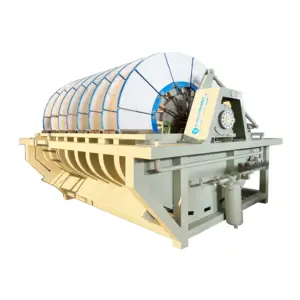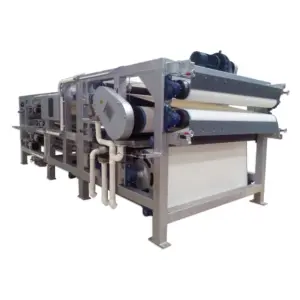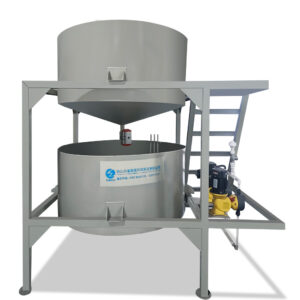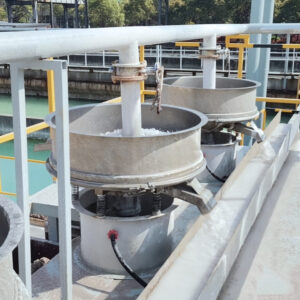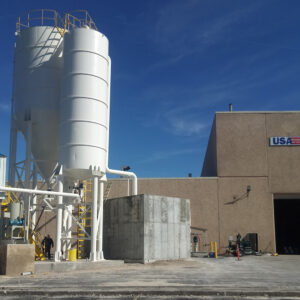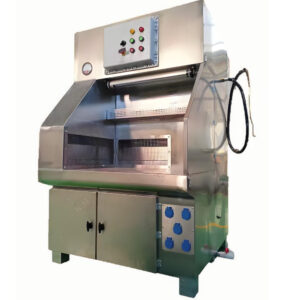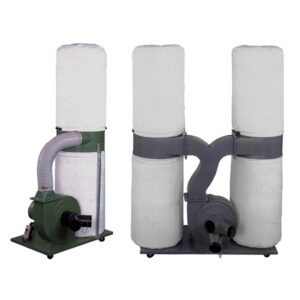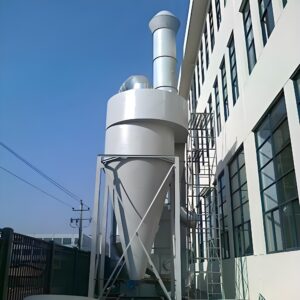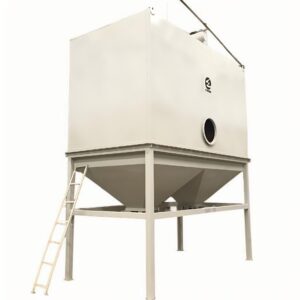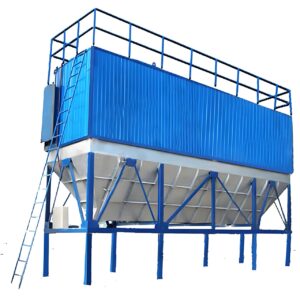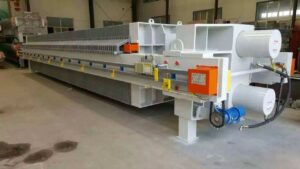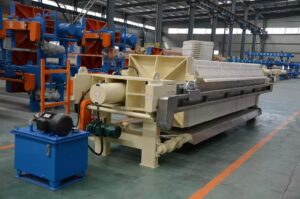The world of water treatment is evolving rapidly, and as we approach 2025, the focus on efficient and cost-effective dosing systems has never been more critical. Water treatment dosing systems play a pivotal role in ensuring the quality and safety of our water supply, but understanding their costs can be a complex endeavor. This comprehensive overview will delve into the intricacies of water treatment dosing system costs, providing valuable insights for industry professionals, municipal planners, and anyone invested in water quality management.
As we navigate through the various aspects of water treatment dosing system costs, we'll explore the factors that influence pricing, emerging technologies that are shaping the market, and strategies for optimizing investments in these crucial systems. From chemical dosing pumps to advanced automated solutions, we'll cover the full spectrum of options available and their associated costs.
The landscape of water treatment is constantly changing, driven by regulatory requirements, environmental concerns, and technological advancements. As we look towards 2025, it's essential to understand how these factors are impacting the cost structure of dosing systems. This article aims to provide a clear and authoritative perspective on what to expect in terms of expenses, helping decision-makers plan for the future of their water treatment infrastructure.
According to industry experts, the global water treatment chemicals market is expected to reach $56.57 billion by 2030, growing at a CAGR of 3.2% from 2022 to 2030. This growth is largely attributed to increasing water pollution levels and stringent government regulations regarding water quality.
What Are the Key Components Driving Water Treatment Dosing System Costs?
The cost of a water treatment dosing system is not a one-size-fits-all figure. It's composed of several key components, each contributing to the overall expense. Understanding these elements is crucial for anyone looking to invest in or upgrade their water treatment infrastructure.
At its core, a dosing system consists of pumps, chemical storage tanks, control systems, and piping. The quality and capacity of these components significantly impact the overall cost. For instance, a high-precision digital dosing pump from PORVOO may come at a premium but offer superior accuracy and reliability compared to more basic models.
Diving deeper, we find that the complexity of the treatment process plays a major role in determining costs. Systems designed to handle multiple chemicals or those requiring precise pH control will naturally be more expensive than simpler setups.
Research indicates that the cost of dosing pumps, which are central to any dosing system, can range from $500 for basic models to over $10,000 for advanced, high-capacity units. The selection of the appropriate pump is crucial for both performance and cost-effectiveness.
| Component | Cost Range (USD) | Factors Affecting Cost |
|---|---|---|
| Dosing Pumps | 500 – 10,000+ | Capacity, precision, materials |
| Chemical Storage Tanks | 200 – 5,000 | Size, material (plastic vs. stainless steel) |
| Control Systems | 1,000 – 15,000 | Automation level, monitoring capabilities |
| Piping and Fittings | 500 – 5,000 | Material quality, system complexity |
In conclusion, the key components driving water treatment dosing system costs are diverse and interconnected. From the quality of individual parts to the overall system design, each element contributes to the final price tag. Understanding these components allows for more informed decision-making and better budget planning.
How Do System Size and Capacity Affect Pricing?
When it comes to water treatment dosing systems, size and capacity are fundamental factors that significantly influence pricing. As we look towards 2025, understanding this relationship becomes increasingly important for municipalities and industries planning their water treatment infrastructure.
The correlation between system size and cost is generally linear, but with some nuances. Larger systems capable of treating higher volumes of water or handling more complex treatment processes naturally come with higher price tags. However, there's often an economy of scale at play, where the cost per unit of treatment capacity decreases as the system size increases.
For example, a small-scale dosing system suitable for a community pool might cost a few thousand dollars, while a large municipal water treatment plant could invest millions in its dosing infrastructure. The water treatment dosing system cost can vary dramatically based on these factors.
Industry data suggests that for every doubling of system capacity, the overall cost typically increases by about 60-80%, rather than doubling. This demonstrates the cost efficiencies that can be achieved with larger systems.
| System Capacity (m³/day) | Approximate Cost Range (USD) |
|---|---|
| 1 – 10 | 1,000 – 5,000 |
| 10 – 100 | 5,000 – 20,000 |
| 100 – 1,000 | 20,000 – 100,000 |
| 1,000 – 10,000 | 100,000 – 500,000 |
| 10,000+ | 500,000+ |
In conclusion, while larger systems do come with higher absolute costs, they often offer better value in terms of cost per unit of treatment capacity. However, it's crucial to accurately assess your current and future needs to avoid overinvesting in unnecessary capacity or underestimating future requirements.
What Role Do Automation and Smart Technologies Play in System Costs?
As we approach 2025, automation and smart technologies are increasingly becoming integral parts of water treatment dosing systems. These advancements not only enhance system efficiency and accuracy but also have a significant impact on overall costs.
Initially, the integration of automation and smart technologies into dosing systems can increase upfront costs. Advanced sensors, real-time monitoring equipment, and sophisticated control systems all contribute to a higher initial investment. However, these technologies often lead to long-term cost savings through improved efficiency, reduced chemical waste, and lower labor requirements.
Smart dosing systems can automatically adjust chemical dosages based on real-time water quality data, ensuring optimal treatment while minimizing chemical usage. This precision can lead to substantial savings on chemical costs over time, especially for larger treatment facilities.
According to a recent industry report, water treatment plants that implemented smart dosing systems saw an average reduction in chemical usage of 15-20%, resulting in significant cost savings over the system's lifetime.
| Technology Feature | Initial Cost Impact | Long-term Cost Impact |
|---|---|---|
| Real-time Monitoring | Increase | Decrease |
| Automated Dosing | Increase | Decrease |
| Remote Management | Increase | Decrease |
| Predictive Maintenance | Increase | Decrease |
In conclusion, while automation and smart technologies may increase the initial water treatment dosing system cost, they often result in substantial long-term savings. As we move towards 2025, these technologies are becoming less of a luxury and more of a necessity for efficient and cost-effective water treatment operations.
How Do Chemical Types and Quality Influence Overall System Expenses?
The types and quality of chemicals used in water treatment dosing systems play a crucial role in determining overall system expenses. As we look towards 2025, the choice of chemicals is becoming increasingly important, not just for treatment efficacy but also for cost management.
Different water treatment processes require specific chemicals, each with its own price point. For example, chlorine, a common disinfectant, is relatively inexpensive, while more specialized chemicals for advanced treatments can be significantly costlier. The quality of these chemicals also matters; higher-grade chemicals may be more expensive upfront but can lead to better treatment outcomes and potentially lower long-term costs.
It's important to note that chemical costs are not just about the purchase price. Storage, handling, and safety requirements for different chemicals can all contribute to the overall expense. Some chemicals may require special storage conditions or have shorter shelf lives, factors that need to be considered in the total cost of ownership.
Industry analyses show that chemical costs can account for 15-30% of a water treatment plant's operating budget. Choosing the right chemicals and optimizing their usage can lead to significant savings.
| Chemical Type | Relative Cost | Treatment Application |
|---|---|---|
| Chlorine | Low | Disinfection |
| Alum | Low-Medium | Coagulation |
| Activated Carbon | Medium | Adsorption |
| Polymers | Medium-High | Flocculation |
| Specialty Chemicals | High | Advanced Treatment |
In conclusion, the choice of chemicals significantly impacts the overall expenses of water treatment dosing systems. While cost is an important factor, it's crucial to balance it with treatment effectiveness and long-term efficiency. As we approach 2025, advancements in chemical formulations may offer new opportunities for cost-effective and efficient water treatment.
What Are the Long-Term Operational Costs Associated with Dosing Systems?
When considering the water treatment dosing system cost, it's crucial to look beyond the initial investment and understand the long-term operational expenses. These ongoing costs can significantly impact the total cost of ownership over the system's lifetime.
Operational costs for dosing systems include regular maintenance, energy consumption, chemical replenishment, and potential repairs. Maintenance is particularly important; regular servicing ensures the system operates efficiently and prevents costly breakdowns. Energy costs can vary depending on the system's size and complexity, with more automated systems potentially consuming more power but offering better efficiency.
Chemical replenishment is an ongoing expense that can fluctuate based on market prices and usage rates. Efficient dosing systems, like those offered by PORVOO, can help optimize chemical usage, potentially leading to significant savings over time.
Studies have shown that over a 10-year period, operational costs can account for 60-70% of the total cost of ownership for a water treatment dosing system. Proper planning and efficient system design can help minimize these long-term expenses.
| Operational Cost Category | Percentage of Total Operational Costs |
|---|---|
| Chemical Replenishment | 40-50% |
| Maintenance and Repairs | 20-30% |
| Energy Consumption | 15-25% |
| Labor | 10-15% |
In conclusion, while the initial investment in a dosing system is significant, the long-term operational costs often exceed it. Understanding and planning for these ongoing expenses is crucial for accurate budgeting and ensuring the system remains cost-effective throughout its lifecycle.
How Do Regulatory Requirements Impact Dosing System Costs?
Regulatory requirements play a significant role in shaping the costs associated with water treatment dosing systems. As we approach 2025, these regulations are becoming increasingly stringent, driven by growing concerns over water quality and environmental impact.
Compliance with regulatory standards often necessitates the use of more advanced equipment and monitoring systems. For instance, regulations may require precise dosing control, real-time monitoring, or the ability to handle specific contaminants. These requirements can drive up both the initial investment and ongoing operational costs of dosing systems.
Moreover, regulatory changes can sometimes require system upgrades or modifications, leading to additional expenses. It's crucial for water treatment facilities to stay ahead of regulatory trends and plan for potential future requirements to avoid unexpected costs.
According to industry experts, regulatory compliance can account for 10-15% of the total cost of a water treatment dosing system. This percentage is expected to increase as regulations become more stringent.
| Regulatory Aspect | Impact on Cost | Example Requirement |
|---|---|---|
| Monitoring | Moderate | Real-time data logging |
| Dosing Precision | High | ±1% accuracy |
| Chemical Handling | Low-Moderate | Safety equipment |
| Reporting | Low | Automated reporting systems |
| Contaminant Removal | High | Advanced treatment technologies |
In conclusion, regulatory requirements significantly influence the cost structure of water treatment dosing systems. While compliance can be expensive, it's essential for ensuring water safety and environmental protection. Staying informed about current and upcoming regulations is crucial for effective cost management and system planning.
What Are the Cost Implications of Integrating Dosing Systems with Existing Infrastructure?
Integrating new dosing systems with existing water treatment infrastructure is a common scenario many facilities face, and it comes with its own set of cost implications. As we look towards 2025, understanding these costs is crucial for effective budget planning and system upgrades.
The complexity of integration largely depends on the compatibility between the new dosing system and the existing infrastructure. In some cases, minimal modifications may be required, resulting in lower integration costs. However, in other situations, significant changes to piping, electrical systems, or control interfaces might be necessary, potentially leading to substantial expenses.
One key consideration is the potential need for system downtime during integration. For many water treatment facilities, especially those serving large populations, minimizing downtime is crucial, which can impact the integration approach and associated costs.
Industry data suggests that integration costs can range from 10% to 30% of the new dosing system's cost, depending on the complexity of the existing infrastructure and the required modifications.
| Integration Aspect | Potential Cost Impact | Considerations |
|---|---|---|
| Piping Modifications | Medium-High | Material compatibility, space constraints |
| Electrical Systems | Low-Medium | Power requirements, control integration |
| Control Systems | Medium-High | SCADA integration, software compatibility |
| Structural Changes | High | Space limitations, load-bearing requirements |
| Training | Low-Medium | Staff familiarity with new technology |
In conclusion, while integrating new dosing systems with existing infrastructure can be challenging and potentially costly, it's often necessary for improving water treatment efficiency and meeting evolving regulatory requirements. Careful planning and assessment of the existing infrastructure can help minimize these integration costs and ensure a smooth transition to the new system.
How Can Facilities Optimize Their Investment in Water Treatment Dosing Systems?
As we approach 2025, optimizing investments in water treatment dosing systems becomes increasingly crucial for facilities looking to balance cost-effectiveness with performance. There are several strategies that can help maximize the return on investment while ensuring high-quality water treatment.
First and foremost, conducting a thorough needs assessment is essential. This involves analyzing current and future water treatment requirements, considering factors such as water quality, treatment volume, and regulatory compliance. By accurately determining needs, facilities can avoid over-investing in unnecessary capacity or under-investing in systems that may quickly become obsolete.
Choosing the right technology is another key aspect of optimization. While advanced systems may have higher upfront costs, they often offer better efficiency and lower operational expenses in the long run. For instance, smart dosing systems with predictive maintenance capabilities can significantly reduce downtime and maintenance costs.
A case study of a municipal water treatment plant showed that investing in an advanced dosing system with real-time monitoring capabilities resulted in a 25% reduction in chemical usage and a 15% decrease in overall operational costs within the first year of implementation.
| Optimization Strategy | Potential Savings | Implementation Complexity |
|---|---|---|
| Needs Assessment | 10-20% | Low |
| Advanced Technology | 15-30% | Medium-High |
| Energy Efficiency | 5-15% | Medium |
| Chemical Optimization | 10-25% | Medium |
| Staff Training | 5-10% | Low-Medium |
In conclusion, optimizing investments in water treatment dosing systems requires a multifaceted approach. By carefully assessing needs, choosing the right technology, and focusing on efficiency, facilities can significantly reduce their water treatment dosing system cost while maintaining or even improving treatment quality. As we move towards 2025, this optimization becomes not just a cost-saving measure but a necessity for sustainable water management.
Conclusion
As we've explored throughout this comprehensive overview, the landscape of water treatment dosing system costs is complex and multifaceted. Looking ahead to 2025, it's clear that while these systems represent a significant investment, they are crucial for ensuring safe and efficient water treatment.
We've seen how various factors influence costs, from system size and capacity to the integration of smart technologies and automation. The choice of chemicals, regulatory requirements, and the challenges of integrating new systems with existing infrastructure all play significant roles in shaping the overall expense.
Long-term operational costs, often overlooked, can substantially impact the total cost of ownership. However, with proper planning and investment in efficient technologies, these ongoing expenses can be managed effectively.
The key takeaway for facilities and municipalities is the importance of a holistic approach to water treatment dosing systems. By considering all aspects – from initial investment to long-term operation, from regulatory compliance to technological advancements – decision-makers can make informed choices that balance cost-effectiveness with performance.
As we move towards 2025, the focus on water quality and environmental sustainability will only intensify. Investing wisely in water treatment dosing systems now can lead to significant benefits in the future, both financially and in terms of treatment efficacy.
In conclusion, while the costs associated with water treatment dosing systems are substantial, they are an essential investment in public health and environmental protection. By staying informed about trends, technologies, and best practices, stakeholders can ensure they are well-prepared for the water treatment challenges of tomorrow.
External Resources
Dosing System – Crystal Quest Water Filters – This page provides detailed information on various dosing systems for water treatment, including systems for pH balancing, organic acid pH reduction, and chlorine injection. It also lists the components included in their dosing systems.
Dosing Equipment Water Treatment – Alibaba.com – This link offers various dosing equipment for water treatment, including prices and minimum order quantities, which can help in estimating costs.
Liquid Dosing System Chemical Dosing Machine in Water Treatment Plant – This page provides pricing information for a liquid dosing system used in water treatment plants, including different pricing tiers based on the quantity purchased.
Aquascape Automatic Dosing System – Fountain – Although this system is discontinued, it provides an example of the cost and features of an automatic dosing system, which can be useful for comparison.
Water Treatment Dosing Systems – GlobalSpec – This resource offers a comprehensive overview of water treatment dosing systems, including types, applications, and specifications, which can help in understanding the cost factors involved.
Dosing Systems for Water Treatment – WaterWorld – This link provides articles and product information on dosing systems for water treatment, which can include cost-related discussions and case studies.
Chemical Dosing Systems – Xylem – Xylem's page on chemical dosing systems includes product details, applications, and potentially pricing or cost-related information for their systems.
Water Treatment Chemical Dosing Systems – SUEZ – This link from SUEZ provides information on their chemical dosing systems, including features and applications, which can help in estimating the costs associated with such systems.
